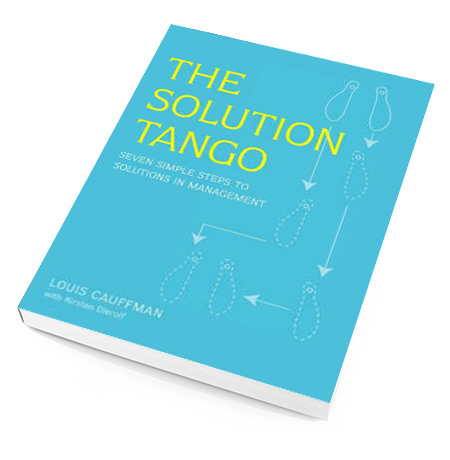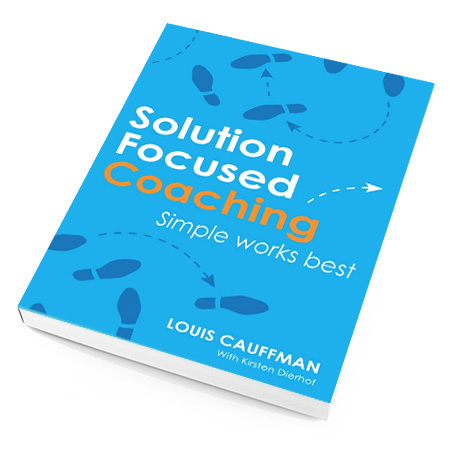Episode 13 – The Man in the Middle: A Solution Focused Feuilleton
Steve: “Good, what else would help in the upcoming project?”
Peter: “More of the same, I guess. But now things are more complex, especially for the dismantling. The contractor and my people will be working together closely. I have confidence in my own people, but given the degree of complexity, I really have to find the best contractors for this project. However, I’m afraid that if I put too much emphasis on the degree of complexity, the contractors will think twice. They might charge so much that we’ll definitely run over budget.”
Steve: “This seems like a good start. How could you turn the contractor that gets the deal into a strategic partner? I mean, should we design the agreement in such a way that the contractor will face disadvantages if Solteam is faced with disadvantages but will reap benefits if Solteam is in a good position?”
Peter is on the verge of a new idea without realizing it himself. Being an expert in the solution-focused model, in which cooperation between all parties concerned is crucial, Steve suggests the idea of “strategic partnership.” He demonstrates again that suggestions in the form of questions work the best.

Peter: “Yes, we’d better team up with the contractors. Or even better, ‘T. E. A. M.’ up with them. (Giggles.) This reminds me of an idea I’ve played with in the past but which I have never used. I’ll tell you about it, but you have to tell me immediately if you think it’s stupid. Anyhow, a lot of internal lobbying would be needed to carry out this idea because Solteam. has never done anything like this.”
Stepping out of the problem fixation helps you to think out of the box. The insights and techniques of the solution-focused model provide mental space where creativity can bloom. The constructive working relationship allows for ideas that you did not dare to think, let alone talk about, before. Using solution-focused questions will lift the self- censorship barrier. Managers often have “wild” ideas that they never bring up for fear of making a fool of themselves. Yet these ideas are often quite valuable!
Steve: “Wonderful, Peter. Now you are really making me curious. Tell me.”
Peter: “Of course, I still have to work out the details, but roughly it comes down to this. Before the negotiation of the contract starts, we stipulate that bonuses and fines can be given to the contractors, just like with car insurance. Fines are easy — if they go over budget, miss the deadline, or fail to meet quality standards, we can fine them. This is a classic, nothing new here — except for the quality part, those initiatives have already been adopted at Solteam. But the bonus side is new for us. Paying extra is not something that is a custom in this company. It will be very difficult to convince Solteam to accept paying these bonuses, even if we as a company benefit from them. Basically, the contractor could earn a substantial bonus if he meets the defined goals regarding time, budget, and quality. The only thing we have to do in advance is work out how we can calculate our profit if we find ourselves in the fortunate position of having to pay the bonus. How much do we gain when the project is on time and on budget? The faster the dismantling is done, the faster the new product line can be set up and become operational. That’s when the money starts pouring into Solteam’s pockets.”
Steve: “That’s great, Peter, I’m impressed. How did you come up with this idea? It’s excellent.”
Peter: “Thanks! Well, it isn’t that new. I read an article about it in a business magazine some time ago and I started thinking about a way to implement this idea in Solutions Focus. I think I even have some drafts on it somewhere. I hope I can still find them.”
Steve: “I have to congratulate you. Find those drafts and work out all the details. The idea of recovering the costs of the bonuses is especially wonderful. That way you create a win-win situation between Solteam and the contractors. T.E.A.M is the correct word to use here! If you need any help selling this idea to the management, I’ll be the first to lend you a hand.”
Now Peter is firmly in the co-expert position: he is using his own resources to solve his problem all by himself. But there is more! Peter also comes up with a way to put the future contractor in the co-expert position as well. This shows that he has internalized the solution-focused approach without either of them saying one word about the model. The solution-focused model is about solutions, not about theory! Let’s see if Peter finds a similarly useful way to tackle the “simpler” problem with John.
Steve: “Now Peter, let’s talk about how you will handle the problem with John.”
You probably notice the implication in this sentence that Steve trusts Peter’s ability to solve this issue. By the way, it’s not because Peter is in the co-expert position regarding the contractors’ issue that this means he is in the same position when it comes to the problem in his relationship with John. Steve assumes that it is safe to go one step back and do a little preparation.
Peter: “I’ll do my best.”
Steve: “From what you tell me, it seems that the rough edges have softened somewhat over the past few weeks. Maybe the fact that you haven’t been seeing each other much lately accounts for this. But still, you have already popped into his office once. OK, he wasn’t there, but nothing stops you from trying again.”
(to be continued)
Already read the last episode 14
Back to episode overview
‘The Man in the middle’ is an excerpt from the book ‘The Solution Tango’ (and ‘Solution Focused Coaching’ e-book) by Louis Cauffman. This book presents a new approach to conquering the numerous challenges, problems, and failures that managers encounter at work, many of which are people-related. An important lesson identified in the book is that a manager must act as both the leader who provides direction for a team or company and as the coach who enables others to make the most of their skills, enabling the individual and the organization to succeed. A seven-step framework to enhance problem-solving capabilities, examples and tips, and a survival kit for sinking managers will help managers improve their people skills and learn how to approach everyday issues from a positive perspective.
 LOUISCAUFFMAN.COM
LOUISCAUFFMAN.COM
